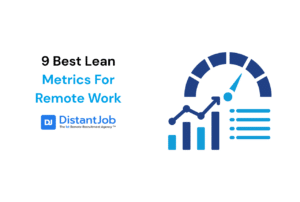The front-end development landscape continues to evolve with emerging trends transforming how users interact with websites and applications. Take augmented reality (AR) and virtual reality (VR), which are reshaping the e-commerce experience, offering immersive and realistic shopping environments. Or AI-powered chatbots to deliver personalized user interactions.
To meet these demands, developers need to elevate their proficiency with front-end development tools. These tools not only enable the streamlining of their workflows but also empower developers to create innovative and user-centric applications that align with the transformative potential of new technologies.
So, what are the must-have front-end development tools? In this article, we break down the essential tools you should add to your toolbox..

Exploring Front-End Development Tools by Category
As a front-end developer, you often face challenges when it comes to debugging and managing complex tasks. Fortunately, there are many tools, frameworks, and applications available to overcome any obstacle.
These are the most popular front-end development tools in 2024 divided by categories:
Front-end Frameworks
Front-end frameworks become an indispensable tool for you, offering a collection of files designed for styling and structuring websites. These frameworks provide pre-built components such as navigation menus, buttons, and typography, essentially eliminating the need to code these elements from scratch.
1. Vue.js
Vue is a free, open-source JavaScript framework used for building user interfaces and single-page applications. As it is built upon the foundations of standard HTML, CSS, and JavaScript, it embraces a declarative and component-based programming paradigm. This approach facilitates the development of user interfaces by promoting a structured and modular code organization.
According to the State of Frontend from The Software House, Vue.js is enjoyed by 44.8% of front-end developers.
Top Features:
- It has a very small size (27 KB).
- It’s flexible, making it suitable for cross-platform applications.
- It has great tooling (Unit testing, State Store, Routing, etc.).
- It combines the best features of Angular and React.
2. Bootstrap
Bootstrap is a free and open-source CSS framework with a focus on fostering responsive and mobile-first approaches to front-end development. It provides a collection of HTML, CSS, and JavaScript tools and components designed to facilitate the development of responsive and visually appealing websites and web applications.
Currently, more than 18 million websites use Bootstrap due to its useful CSS and JavaScript-designed templates useful for typography, forms, navigation, and other essential components of the user interface.
Top Features:
- It provides a responsive system.
- Suitable for modern browsers (Chrome, Safari, Opera, etc).
- Easy to use, and it’s also mobile-friendly.
3. Tailwind CSS
Tailwind’s CSS allows developers to build custom designs directly in HTML by composing utility classes, which can significantly speed up styling for those who learn it.
Tailwind’s adoption has grown sharply, with about 66.7% usage as stated in the 2024 State of Frontend. By some measures, it might overtake Bootstrap soon. Its key benefits are rapid UI development without leaving your markup, plus excellent customizability with configuration.
Top Features:
- The Utility-First Approach allows you to design elements in HTML without writing custom CSS code
- Adapts to different screen sizes and devices
- Customization options to configure specific design requirements
- Just-in-Time (JIT) Mode
JavaScript Libraries
JavaScript libraries compromise sets of code that elevate your websites by enhancing interactivity, ensuring browser compatibility, and incorporating dynamic features such as animations, blog post tags, and auto-completing form fields. These are the most popular options:
4. React
React is an open-source JavaScript library used for building user interfaces. It stands out as one of the fastest libraries available because it excels in web app development due to its features. React is so dominant that it’s considered like a framework by JavaScript users in everything but name.
For example, ReactJS uses a virtual DOM instead of the real DOM, meaning that a web page no longer recalculates every time the DOM changes the browser. This and other features allow React developers to build fast and clean websites.
Top Features:
- Easy to understand and learn.
- Great for mobile app development.
- Provides stable code and useful tools for developers.
- It’s component-based.
Check here for more information about: React Vs Swift: Which one is Better
Text Editors and Integrated Development Environments (IDEs)
Text editors offer simplicity and speed, allowing you to make quick edits and focused coding tasks, while IDEs offer a comprehensive suite of features like debugging and testing to cater to your different development needs.
5. Sublime Text 3
Sublime Text 3 is a cross-platform text editor used for coding and text editing. It is developed by Sublime HQ and is known for its speed, simplicity, and extensibility.
Sublime Text 3 supports various programming languages and markup languages and provides features like syntax highlighting, auto-completion, multiple selections, and a powerful command palette.
Top Features:
- Rapid speed and efficient performance.
- Enables simultaneous editing across multiple locations.
- Supports a broad range of plugins.
- It has a quick and accessible command menu.
6. WebStorm
WebStorm is a powerful and intelligent IDE. JetBrains designed it for JavaScript, TypeScript, HTML, and CSS development. It’s renowned for its deep understanding of code structure and its extensive set of built-in tools that aim to boost developer productivity.
WebStorm is particularly well-suited for professional front-end and Node.js developers who work on complex projects and value an all-in-one, highly intelligent, and productive development environment. While it is a commercial product (requiring a paid license), many developers find its extensive features and productivity boosts justify the cost.
Top Features:
- Intelligent Code Editor
- Comprehensive Technology Support (JavaScript & TypeScript, plus popular frameworks)
- Productivity and UX Features
- Features like “Code With Me” allow for real-time collaborative coding
7. Visual Studio Code
Visual Studio Code (VS Code) is a free and open-source source code editor. Developed by Microsoft, VS Code remains as the most popular IDE across all developers, increasing its usage in 2023 from 75% to 81%, according to the Stack Overflow 2023 Developer Survey.
VS Code is known for its lightweight and fast performance, making it suitable for a wide range of development tasks, from web development to cloud and mobile application development.
Top Features:
- Offers powerful IntelliSense capabilities, providing real-time code completion, suggestions, and context-aware navigation.
- Integrated Git version control.
- Has a vast library of extensions.
- It comes equipped with a robust debugging interface.
8. Cursor
Cursor is a powerful AI-assisted IDE, excellent for detailed development. It supports multiple files, strong code completion, and integration with VS Code as well. That being said, it might have a steeper learning curve for beginners.
Cursor lets you write code by describing changes, offering intelligent autocompletions, and even entire function generation.
Top Features:
- Faster Coding with AI, predicting entire blocks of code
- Real-time Collaboration
- Enhanced Error Detection
- Integration with VS Code Extensions
- Smart Code Optimization
9. Bolt
Bolt is an AI-driven IDE. It’s beginner-friendly, good for rapid prototyping and quick project setups, especially for full-stack applications. It might not be ideal for complex, enterprise-level projects or when deep customization is needed. Its full potential blossoms in the hands of start-ups who need an MVP yesterday.
Top Features:
- Prompt-to-app generation
- AI-driven error detection and fixing
- AI-powered planning and debugging
- MVP prototyping
Package Managers
Package managers are useful tools to streamline the process of installing, updating, configuring and managing software libraries or packages in a software project.
10. Npm
Npm is the Node package manager for JavaScript. The primary features of this installation tool are the ability to organize modules and manage dependency conflicts intelligently. Because of its features, nmp is extremely configurable and can support multiple use cases.
Using this tool, you can publish, discover, install, and develop node programs and discover packages of reusable code to reassemble them according to your priorities.
Top Features:
- Over 470,000 free code packages are available in the Registry.
- Publish and control access to a namespace.
- Manage public and private code with the same workflow.
11. Yarn
Yarn is a package manager for JavaScript that was developed by Facebook in collaboration with other tech companies. It is designed to be a fast, reliable, and secure alternative to npm (Node Package Manager), which is the default package manager for Node.js.
Top Features:
- Provides multi-tenant data processing.
- Optimize resource utilization.
- Significantly improved data center processing power.
Task Runners
Task runners are efficient tools that streamline and automate critical aspects of your workflow, such as code compilation and testing. By adopting these task runners, you can enhance efficiency, reduce manual overhead, and ensure more streamlined development processes.
12. Webpack
A long-standing module bundler, Webpack is a staple in front-end development, known for its flexibility and extensive plugin ecosystem. It handles module bundling, code splitting, and various other tasks, making it a powerful tool for complex projects.
Top Features:
- Webpack provides built-in optimizations for production builds.
- Separate bundles, reducing time by only loading the necessary code
- Eliminates unused code from the final bundle, resulting in smaller file sizes
- Enables real-time code updates without requiring a full page reload
13. Vite
A relatively newer build tool, Vite has gained rapid popularity for its speed and ease of use. It leverages native ES modules for faster development builds and offers a smooth experience, especially with modern frameworks like React, Vue, and Svelte.
Top Features:
- Instant server start
- Enables real-time code updates without requiring a full-page reload
- Built-in optimizations for production builds
- Flexible plugin system
CSS Preprocessors
CSS preprocessors have advanced features like variables, mixins, and nested rules, enabling more maintainable and modular stylesheets. This enhances code organization, promotes reusability, and significantly reduces redundancy, resulting in streamlined and more efficient stylesheets. Here are some common options:
14. Sass
Its name is an abbreviation for syntactically awesome style sheets. In short, it consists of a preprocessor scripting language that compiles into CSS. Therefore, it allows you to use variables, nested rules, mixing, and functions. One of its awesome features is that it also facilitates sharing design across projects.
Top Features:
- Developers can organize large stylesheets.
- It’s compatible with CSS.
- It has multiple functions for color manipulation.
- It offers advanced features like control directives for libraries.
Performance Optimization Tools
With performance optimization tools you can easily identify and address bottlenecks and inefficiencies in your applications. By providing insights into resource usage, loading times, and rendering processes, these tools allow you to optimize the user experience and ensure web applications deliver great speed and responsiveness.
15. Lighthouse
Lighthouse is an open-source, automated tool for improving the quality of web pages. It performs audits on various aspects, including performance, accessibility, SEO, and best practices.
Top Features:
- Conducts comprehensive audits.
- Provides actionable insights based on real-world performance metrics.
- Identifies and suggests improvements for accessibility issues.
- Integrates with Chrome DevTools.
16. PageSpeed Insights
Google PageSpeed Insights (PSI) stands as a widely-used, complementary tool for evaluating the page speed performance of a website across both mobile and desktop platforms.
The tool assigns a score ranging from 0 to 100, with a higher score indicating optimized speed and efficiency. Additionally, PSI offers actionable suggestions to enhance the website’s performance.
Top Features:
- Assigns scores based on performance metrics.
- Utilizes real user data for assessing actual usage scenarios.
- Provides separate evaluations for mobile and desktop performance.
- Assesses both cached and uncached versions for a comprehensive analysis.
17. WebPageTest
WebPageTest stands out as a robust, open-source tool crafted to assist website owners and developers in monitoring and refining their website’s performance. Offering a thorough analysis encompassing load times, rendering speed, and network usage, it additionally provides a detailed breakdown of individual page elements.
It allows testing from multiple locations and offers advanced customization options.
Top Features:
- Offers detailed settings for configuring tests.
- Generates a visual film strip showing how a page renders over time.
- Presents detailed waterfall charts.
Responsive Design and Testing Tools
Responsive design and testing tools enable you to create and validate web applications that adapt across different devices and screen sizes. By facilitating the development of responsive layouts and providing robust testing capabilities, these tools ensure a consistent and user-friendly experience.
18. ChromeDev Tools
Chrome DevTools provides a suite of debugging tools embedded within the Chrome browser, offering rapid analysis, debugging, and manipulation of websites.
It has a comprehensive toolkit for enhancing website functionality efficiently, including the ability to inspect and edit HTML elements and CSS properties in real-time, monitor network requests, analyze performance, and examine local storage.
Top Features:
- Real-time HTML and CSS inspection.
- You can monitor network requests in detail, analyzing factors such as load times, resource sizes, and response headers.
- Provides tools for analyzing the performance of web pages.
- Enables you to check and manipulate local storage
19. Viewport Resizer
Viewport Resizer is a browser-based tool that allows you to test and preview how a website or web application responds to different viewport sizes.
It provides a simple and convenient way to simulate various device resolutions, helping you assess the responsiveness and layout adjustments of your projects across a range of devices such as smartphones, tablets, and desktops.
Top Features:
- Provides customizable resolutions.
- Allows you to toggle between portrait and landscape orientations.
- Device pixel ratio adjustment.
- Displays real-time information about the current viewport dimensions.
20. Responsively
Responsively is an open-source browser extension and development tool that aids web developers and designers in building responsive web applications. It allows you to visualize and interact with their websites simultaneously across multiple device viewports.
Top Features:
- Multi-device visualization
- You can interact with their website in real time within the tool
- Customizable viewports
- Enables live CSS editing, allowing you to make adjustments.
Graphic and Design Tools
Graphics and design tools are indispensable for creating visually compelling and intuitive user interfaces. These tools facilitate the implementation of compelling design elements, enhance the overall aesthetics of applications, and contribute to a positive user experience.
21. Lottiflies
LottieFiles has the largest collection of freely available animations globally, featuring thousands of distinct designs suitable for personal and commercial ventures. These professionally crafted animations offer customization options, allowing you to adjust color, height, width, animation speed, and more to seamlessly align with their website’s theme.
Upon finalizing customization, you can effortlessly copy the generated code and paste it into their projects wherever needed.
Top Features:
- LottieFiles streamlines the integration process by generating code snippets.
- It provides an intuitive and user-friendly interface.
- Customization options.
22. Figma
Figma stands as a collaborative, web-based design tool facilitating seamless cooperation to craft user interfaces for both mobile and web applications. Equipped with an array of design tools like vector editing, prototyping, and animation, Figma allows you to generate high-fidelity designs and interactive prototypes.
Top Features:
- Real-time collaboration.
- It provides a comprehensive set of design tools.
- Ensures accessibility from any device with an internet connection.
- It supports a wide range of plugins that enhance its functionality.
Code Quality and Testing
These tools ensure the reliability and robustness of your software applications. By enforcing coding standards, identifying bugs, and automating testing processes, these tools not only enhance the overall quality of code but also contribute to the development of stable and maintainable software.
23. ESLint (code quality)
ESLint is a popular open-source static code analysis tool for JavaScript. It is designed to identify and highlight patterns or potential issues in JavaScript code, ensuring adherence to coding standards and best practices.
You can configure ESLint to your project’s specific requirements, which will help you catch errors, maintain consistent coding styles, and enhance overall code quality during the development process.
Top Features:
- It is highly configurable.
- It supports the use of plugins, making it extensible and adaptable to a wide range of project requirements.
- Provides real-time feedback within the integrated development environment (IDE)
- Comes with a comprehensive set of predefined rules covering common best practices
24. Jest
Jest is a JavaScript testing framework designed to make testing your code a seamless and enjoyable experience. With Jest, you can effortlessly write and run tests for your JavaScript applications.
Top Features:
- Jest requires minimal configuration
- Provides snapshot testing
- Optimizes test execution by running tests in parallel
- It provides powerful mocking capabilities
25. Selenium
Selenium is a powerful and widely adopted open-source framework designed to automate the testing and interaction of web applications across different browsers and platforms. It provides a versatile set of tools and libraries for browser automation and testing.
Top Features:
- Cross-browser compatibility
- Multi-language support
- Supports parallel test execution
- Integrates with popular testing frameworks like JUnit and TestNG.
26. Playwright
Playwright is a newer framework that has seen rapid growth, praised for its speed, ease of use, and ability to handle modern web technologies. It’s often seen as a strong contender to Selenium and is gaining popularity for its modern features and performance.
Playwright is versatile, and features multi-browser support, advanced features like network interception, and the ability to handle multiple tabs and windows.
Top Features:
- Multi-browser support (Chromium, Firefox, WebKit).
- Parallel test execution is natively supported.
- Advanced features like network interception and testing multiple tabs/windows.
- Suitable for complex, multi-layered applications requiring scalability.
27. Cypress
Cypress is a popular framework, particularly for testing modern web applications, known for its developer-friendly experience and fast test execution. It’s a solid alternative to Selenium as well, especially for projects whose priority is speed and ease of use.
Cypress focuses on JavaScript and TypeScript, excels in frontend testing, and offers automatic waiting and real-time reloading.
Top Features:
- User-friendly, especially for JavaScript and TypeScript projects.
- Excellent for front-end testing with automatic waiting and real-time reloading.
- Strong community support and abundant online resources.
Accessibility Tools
Accessibility tools are crucial for you as a front-end developer because they ensure that your web applications are inclusive and usable by individuals with diverse abilities. By utilizing these tools, you can identify and address accessibility issues, providing an accessible and enhanced user experience for all users, regardless of their physical or cognitive capabilities.
28. axe Accessibility Checker
Axe Accessibility Checker is a powerful and widely used open-source tool designed to assist developers in identifying and addressing accessibility issues in web applications.
Top Features:
- axe accessibility checker automates the process of accessibility testing.
- Provides detailed issue reports.
- It seamlessly integrates into various development workflows.
- Focuses on inclusivity.
29. WAVE (Web Accessibility Evaluation Tool)
WAVE is a widely used accessibility testing tool designed to help you ensure the accessibility of your web content. Developed by WebAIM, WAVE assists in identifying and addressing potential accessibility issues, providing insights and guidance for creating inclusive digital experiences.
Top Features:
- Offers an in-page evaluation feature.
- Generates detailed accessibility reports.
- Integrates with browser extensions.
- It evaluates web content against recognized accessibility standards.
Start Building Your Front-End Development Tool Kit
With the popularity of front-end development tools being on the rise due to ever-changing web techs, it might be challenging to pick the right tool or set of tools for your project. Hopefully, this list of popular front-end development tools we put together with our developers will give the answer you were looking for. P.S. If you’re looking to expand your team with skilled front-end developers, we’re your guys. At DistantJob, we focus on elevating organizations’ technical teams to new heights by matching expert developers with global companies. Want to know more? Let’s talk!
FAQ
Front-end development refers to the process of creating and implementing the user interface and visual elements of a website or web application.
The top front-end development tools encompass a range of categories, including version control systems like Git, task runners like Gulp, and CSS preprocessors like Sass. These tools streamline workflows, enhance collaboration, and empower front-end developers to create efficient and visually compelling web applications.
Most front-end developers commonly use a combination of tools such as Visual Studio Code as their code editor, Git for version control, and popular JavaScript frameworks like React or Vue.js for building interactive and dynamic user interfaces.




